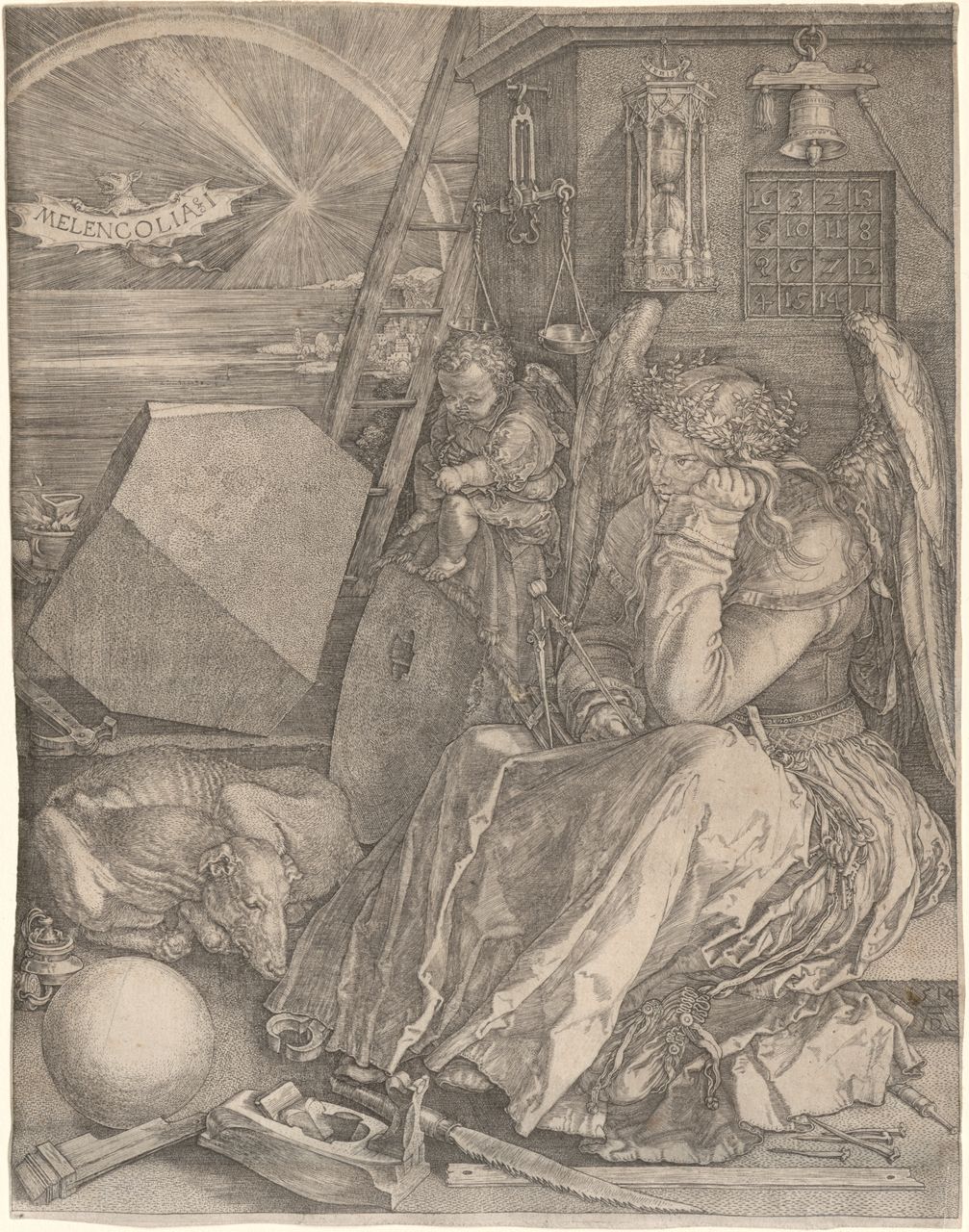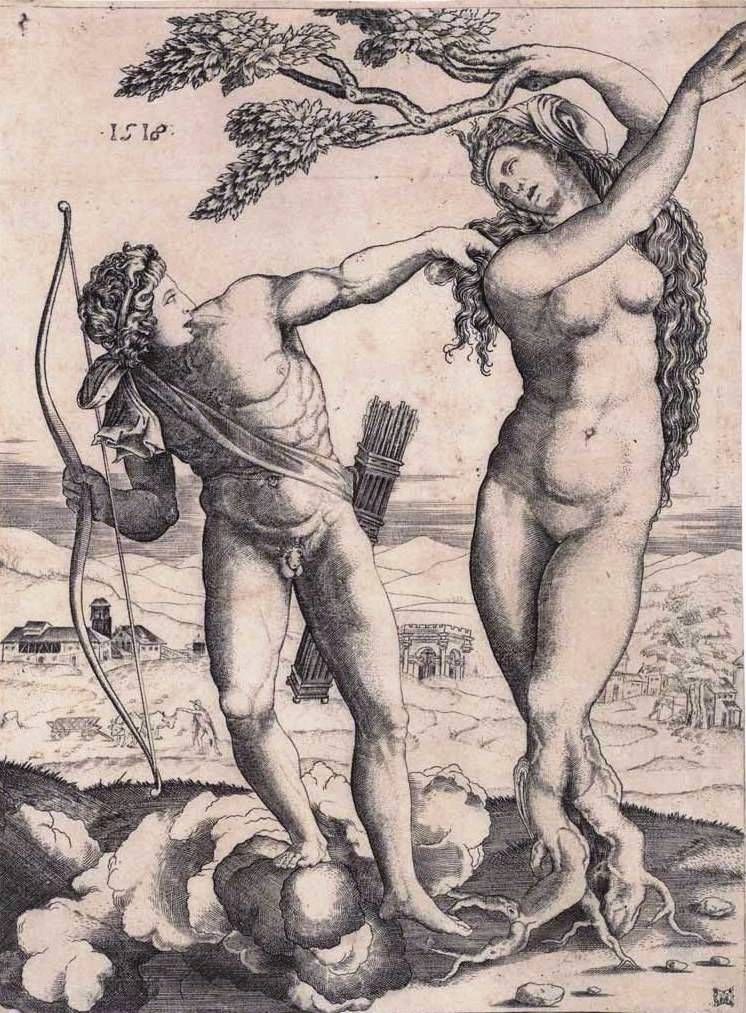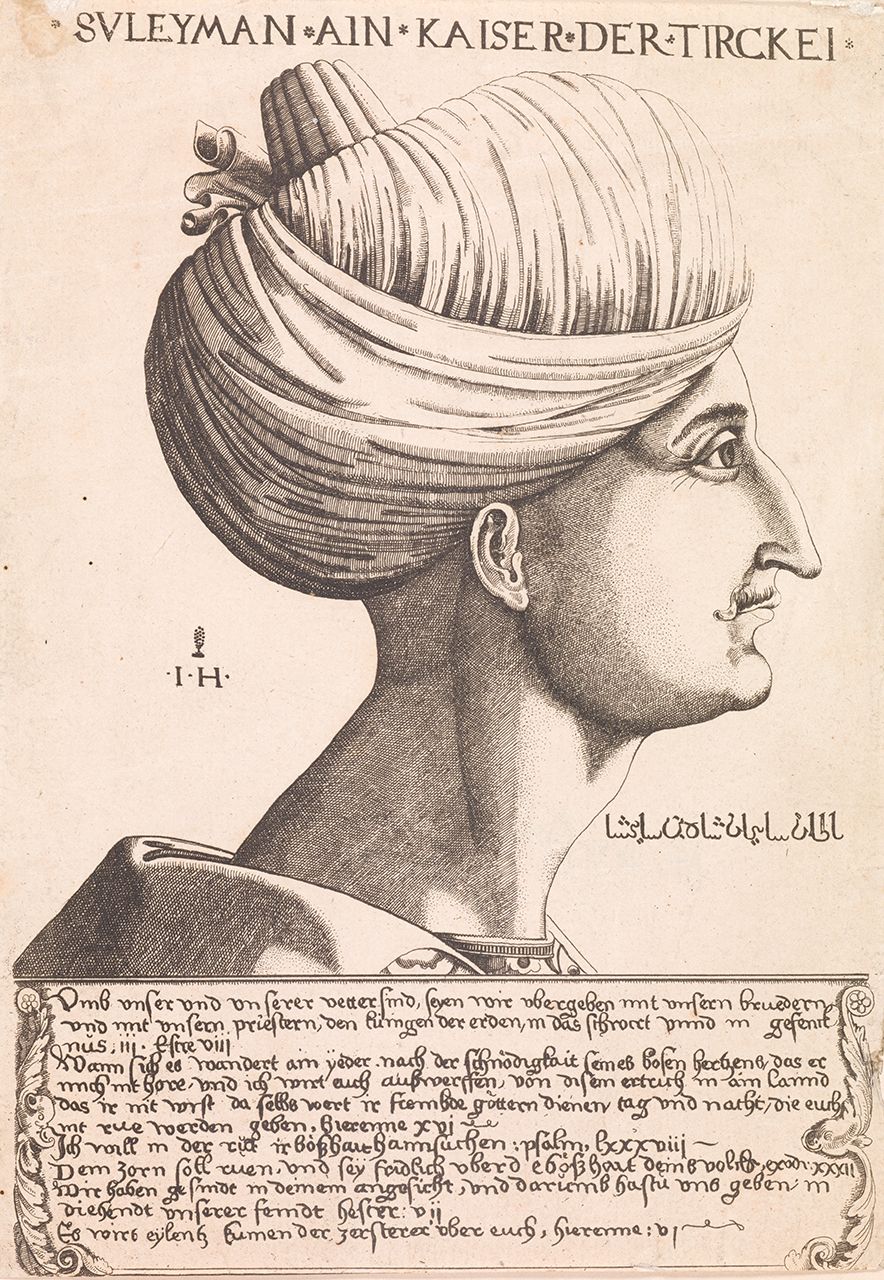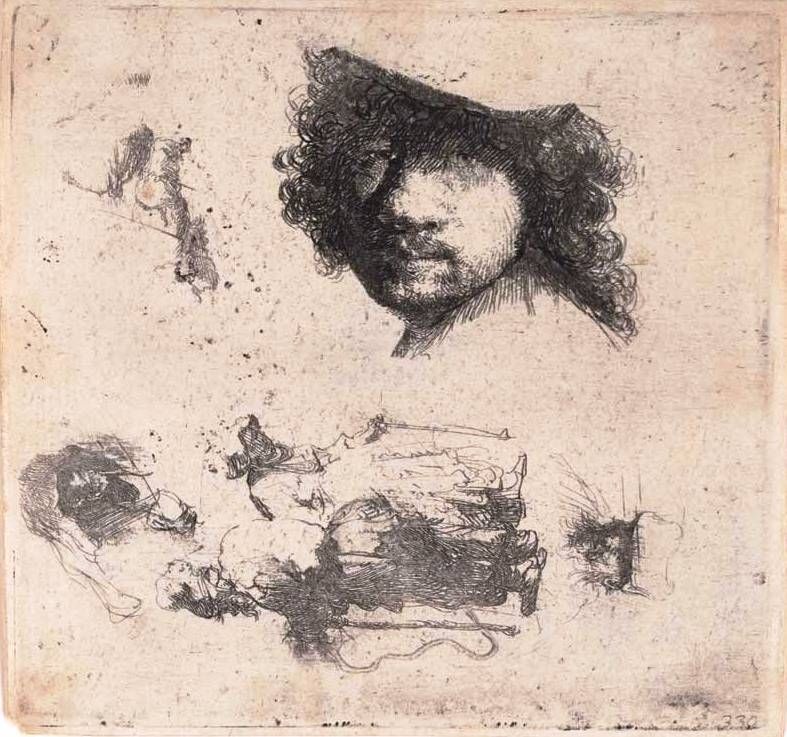Horizon lines
The ambitions of a print collection
Horizon lines: The ambitions of a print collection focuses on Northern and Italian Renaissance printmakers, such as Albrecht Dürer, and Dutch Republic prints, including Rembrandt, as well as the etching revival. The selected woodcuts, engravings and etchings present a variety of perspectives on the ambitions of the artists who created them, as well as their collectors and scholars.
The exhibition is staged as one of several activities to celebrate the 50thanniversary of the Harold Wright and Sarah and William Holmes scholarships. The awards enable print scholars from Australia or New Zealand to examine prints at the British Museum. Taking its cue from the approaches of Harold Wright and the scholarships, the exhibition encourages considered looking, for the acquisition of knowledge and sheer enjoyment of prints.
Baillieu Library, University of Melbourne
July 31st-December 8th 2019

Horizon lines: Marking 50 years of print scholarship
Horizon lines is a collection of compelling essays on Western print practitioners, print collectors and print history from the 15th to the 20th centuries. It celebrates the 50th anniversary of the Harold Wright and Sarah and William Holmes scholarships, awards which link the University of Melbourne and the British Museum and secure a unique opportunity for print scholars from across Australia and New Zealand to study prints first-hand at the British Museum. These studies have benefitted several generations of print curators and academics as well as print scholarship itself. In Horizon lines, rather like a Festschrift, the essays, all by award recipients, have been written to honour the scholarships which inspired them.
Available after 31st July 2019. Purchase from the Grainger Museum or Readings.
The symposium, Prints, Printmaking and Philanthropy: celebrating 50 years of the Harold Wright Scholarship, will focus on three broad themes - print exhibitions, print collections and print presses - and consider the influence of philanthropy in shaping print culture from historical and contemporary perspectives. Full program details will be forthcoming.
Forum Theatre, Arts West, University of Melbourne
September 30th - October 2nd 2019
Public programs
Monday 5 August
12noon-1:00pm
Curator’s floor talk
Kerrianne Stone
Curator, Prints
Tuesday 20 August
12noon-1:00pm
Lightning talks on selected prints
Print Collection Interns
Tuesday 17 September
12noon-1:00pm
Tour the VCA Print Workshop
Adrian Kellett
Print Workshop Coordinator
Meet at Southbank Campus
Monday 30 September
1:30pm-2:15pm
The etchings of Charles Meryon, a lecture by Harold Wright
Read by John Wolseley
Printmaker
Art tour: Trace a journey through the art on campus by visiting the exhibition Horizon lines and continue to explore places and objects of interest at the University of Melbourne. Tour designed by Mary Henkel, Print Room Intern.
-
Giorgio Ghisi
Drawing on the design of Apollo and the Muses by Luca Penni, Giorgio Ghisi created this engraving that depicts the Greco-Roman sun god, Apollo, sitting upon Mount Parnassus, a mountain sacred to the Dorians in Ancient times. Beneath him is a chorus of nine muses who play musical instruments and dance as Apollo plays the six stringed lira da braccio – an instrument frequently cited during the sixteenth century and often played alongside epic verses.
-
Divine Harmony
Gioseffo Zarlino was an Italian composer and music theorist who was born in Chioggia, near Venice. In 1541 he took Deacon’s orders and studied music at the basilica of St. Mark in Venice under the composer and maestro di capella, Adriaan Willeart. In 1565, Zarlino moved to Rome after he was offered the prestigious role of maestro di cappella. There, he worked as a music director and teacher of students including Claudio Merulo and Vincenzo Galilei (father of the astronomer, Galileo Galilei).
-
Adriaen van Ostade
Adriaen van Ostade was a prolific artist who was successful during his lifetime, producing approximately fifty etchings and eight hundred drawings throughout his career. He was born in 1601 and lived his entire life in Haarlem and frequently visited Amsterdam.
-
Tudor Revival
Latticed, or leaded light windows, were first developed in England during the Middle Ages and lasted into the Tudor period. Large sheets of glass were difficult to produce and so these windows comprised smaller panels which were usually diamond or rectangular shaped and set in lead for support. This became the most common type of window across western Europe until the seventeenth century when it was replaced by broad glass technology. It is therefore curious that we find latticed windows on the Old Quadrangle building which was first built in 1856.
-
Jacopo Caraglio
Jacopo Caraglio was a printmaker, goldsmith, architect and medallist who was born in either Verona or Parma in 1505. The featured print is based on an unknown image; however, Caraglio’s choice of subject matter as well as the animated gestures and triangular grouping of figures recalls Raphael’s fresco School of Athens which is in the Stanza della Segnatura, inside the pope’s official residence at the Vatican.
-
The Armillary Sphere
The Armillary sphere sculpture which sits at Cussonia Court, was gifted to the university by Emitus Professor John Lovering and his wife Kerry. The name derives from the Roman Latin word armillae which means brass ring and it is designed to demonstrate the celestial spheres and their motions.
-
Hieronymus Hopfer
Hopfer’s engraving represents the Sultan Soliman I, known as ‘Suleyman the Magnificent’ throughout Europe, who ruled the Ottoman Empire from 1520 until 1566. The expansion of the Ottoman Empire under Soliman’s rule became a source of envy, fear and fascination for Europeans, particularly after its invasion of eastern Hungary in 1526 in what became known as the Battle of Mohacs. The defeat of the kingdom led to the division of Hungary between the predominantly Muslim Ottoman Empire and Catholic Spanish rule.
-
Ottoman Turkish Book Binding
Throughout the Ottoman Empire, book binding became a significant craft from around 1421-51 when the Sultan Murat II was in power. Murat’s literary interests have been greatly attributed to the development of book arts which continued to flourish after his rule and is considered to have peaked during the sixteenth century, known as the classical era of Ottoman book binding.
-
William Palmer Robins
William Palmer Robins (1882-1959) was an English artist from Southwark and the son of the naturalist William Benjamin Roberts. As a child Robins’ father would take him for walks through the country to sketch the landscape and instilled in him a lifelong appreciation for outdoor environments. It is estimated that Robins produced 270 etchings over his lifetime. The Old Willow was created in 1913 when Robins was living at Knebworth, Hertfortshire. He would visit the nearby forest and etch from direct observation onto already prepared plates.
-
The Crack Willow Tree
The crack willow, or brittle willow (Salix fragilis) is native to Europe and western Asia. It is a dioecious tree which means that female and male flowers do not grow on the same plant. Towards the end of spring, hanging clusters of flowers called catkins usually become yellow if they are male, or green if they are female. After pollination, female catkins will take on a woolly texture and their seeds will be scattered by the wind. After the willow has flowered, leaves which are smooth and glossy on top will emerge on mature trees.
-
Albrecht Dürer
St Jerome (c. 347 - 419/20) was a Christian priest, theologian and historian renowned for his translation of the Bible into Latin (known as the Vulgate) as well as his commentaries on the gospels. He was one of the favoured saints during the sixteenth century, as Renaissance humanists were attracted to his pursuit of knowledge and deep Christian faith.
-
Knowledge is Logic
In 1912, fossils named ‘Piltdown Man’ were discovered in East Sussex by the amateur archaeologist Charles Dawson (1864-1916). The human-shaped skull and ape-like jaw were identified as Eoanthopus dawson meaning ‘dawn man’; a humanoid ancestor rather than a member of the homo genus. This finding supported the theories of anthropologists who hypothesised that there had been human-like beings in Britain similar to the Neanderthals discovered in Germany. This discovery became the foundation for the emerging study of prehistoric human evolution and reshaped the discipline of evolutionary science.
Selected Images
-

Brown, Henry James Stuart (1871-1941)
Brown, Henry James Stuart (1871-1941) View in Cambridgeshire
1927
etching
plate 18.5cm (H) x 28.6cm (W)
sheet 22.5cm (H) x 33.1cm (W)
1964.2223.000.000
Baillieu Library Collection, the University of Melbourne. Gift of Mrs L.I. Wright 1964. -

Dürer, Albrecht (1471-1528)
Dürer, Albrecht (1471-1528) Melancholia
1514
engraving
image (sheet trimmed to image) 23.8cm (H) x 18.6cm (W) 1988.2013.000.000
Baillieu Library Collection, the University of Melbourne. -

Musi, Agostino (1490-1540)
Musi, Agostino (1490-1540)
Raimondi, Marcantonio (1480-1527-34)
Bandinelli, Baccio (Artist, 1493-1560)
Apollo and Daphne
1515
engraving
image (sheet trimmed to image) 23.0cm (H) x 16.8cm (W) 1959.3397.000.000
Baillieu Library Print Collection, the University of Melbourne. Gift of Dr J. Orde Poynton 1959. -

Hopfer, Hieronymus (active 1520-35)
Hopfer, Hieronymus (active 1520-35)
Soliman, Emperor of Turkey (Suleyman ain Kaiser der Tirckei)
(c.1526)
etching
image (sheet trimmed to image) 21.9cm (H) x 15.2cm (W) 2018.0014.000.000
Baillieu Library Print Collection, University of
Melbourne. Purchased, 2018. -

Rembrandt van Rijn (1606-1669)
Rembrandt van Rijn (1606-1669)
Sheet of studies: head of the artist, a beggar couple, heads of an old man and old woman, etc.
(c. 1632)
etching
plate 9.9cm (H) x 10.5cm (W)
sheet 10.2cm (H) x 10.9cm (W)
1959.3714.000.000
Baillieu Library Print Collection, the University of Melbourne. Gift of Dr J. Orde Poynton 1959. -

Ruisdael, Jacob van (1628-1682)
Ruisdael, Jacob van (1628-1682) The cottage at the top of a hill
(c. 1660)
etching
image 18.5cm (H) x 27.1cm (W) plate 19.5cm (H) x 28.0cm (W) sheet 20.1cm (H) x 28.8cm (W) 1959.2942.000.000
Baillieu Library Print Collection, the University of Melbourne. Gift of Dr J. Orde Poynton 1959. -

Master Iqv Primaticcio, Francesco (Artist, 1504-70)
Master Iqv
Primaticcio, Francesco (Artist, 1504-70)
Apelles Painting Campaspe
(1542-47)
engraving
plate 44.7cm (H) x 31.1cm (W)
sheet 46.0cm (H) x 31.8cm (W)
sheet (adhered) 55.4cm (H) x 44.2cm (W) 1959.4632.000.000
Baillieu Library Print Collection, the University of Melbourne.
Gift of Dr J. Orde Poynton 1959. -

Burgkmair, Hans (1473-1531)
Burgkmair, Hans (1473-1531) The people of Calicut (1516-18)
woodcut
sheet (irregular) 25.8cm (H) x 39.1cm (W) 1959.2377.000.000
Baillieu Library Print Collection, the University of Melbourne. Gift of Dr J. Orde Poynton 1959. -

Ghisi, Giorgio (1520-1582)
Ghisi, Giorgio (1520-1582) Raphael (Artist, 1483-1520) Allegory of Life
1561
engraving
image (sheet trimmed to image) 38.2cm (H) x 54.1cm (W) 1959.2550.000.000
Baillieu Library Print Collection, the University of Melbourne. Gift of Dr J. Orde Poynton 1959. -

Ostade, Adriaen Van (1610-85) Villiage festival under a trellis (1640-80)
Ostade, Adriaen Van (1610-85) Villiage festival under a trellis (1640-80) etching image 12.6cm (H) x 17.4cm (W) plate 12.8cm (H) x 17.6cm (W) sheet 13.5cm (H) x 18.3cm (W) sheet (adhered) 37.9cm (H) x 30.3cm (W) 1959.4291.000.000 Baillieu Library Print Collection, the University of Melbourne. Gift of Dr J. Orde Poynton 1959.